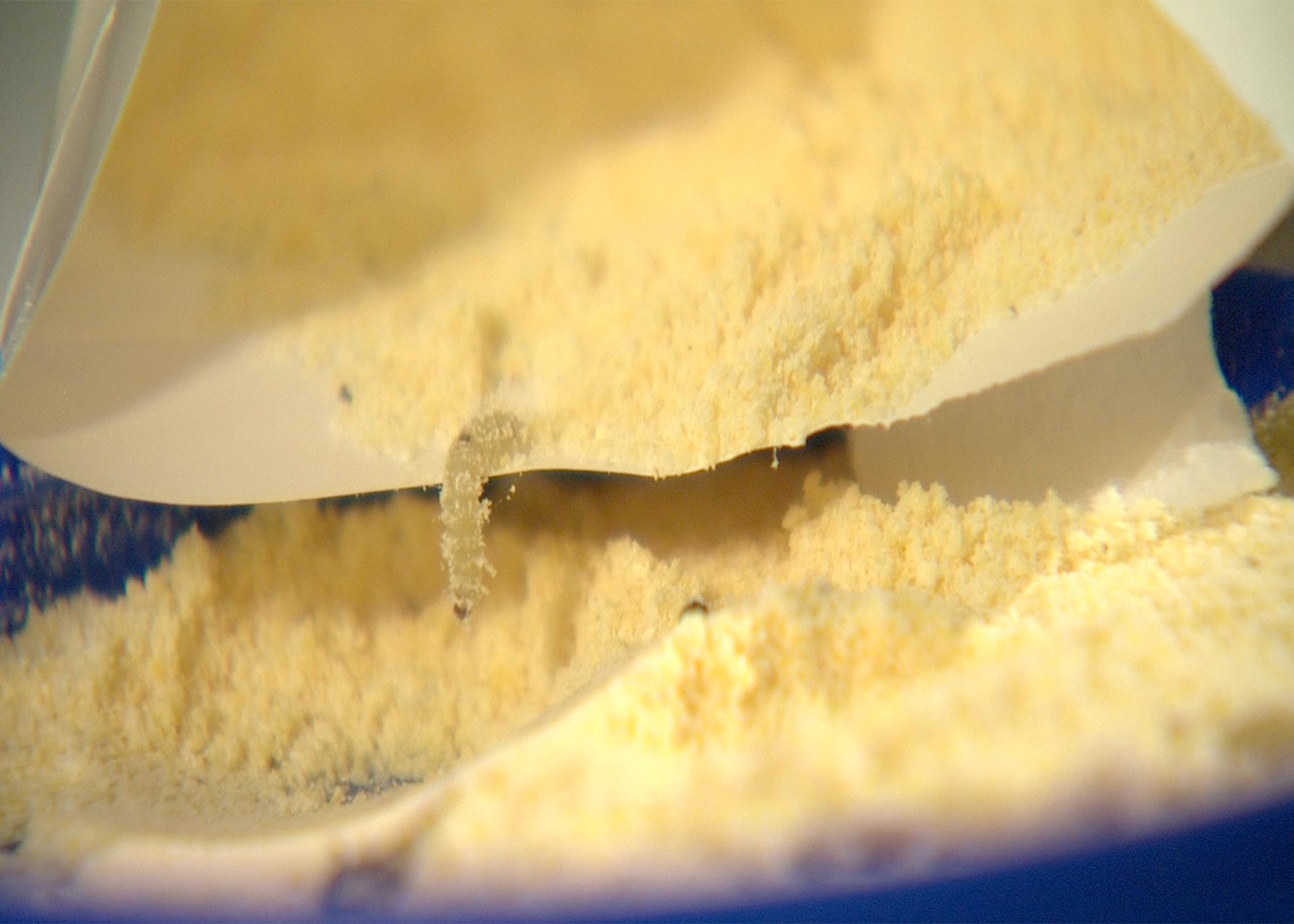Information Possibly Outdated
The information presented on this page was originally released on March 3, 2015. It may not be outdated, but please search our site for more current information. If you plan to quote or reference this information in a publication, please check with the Extension specialist or author before proceeding.
Spring-cleaning can keep stored food pests at bay
RAYMOND, Miss. -- The kitchen pantry is a prime target for pests looking for an easy meal, but a little spring-cleaning can stop them in their tracks.
“It’s a good idea for cooks to empty the pantry at least once a year and check items that have gotten pushed to the back of the cabinet,” said Natasha Haynes, Mississippi State University Extension Service agent and host of “The Food Factor.” “Throw out any expired food or food that has been open for several months.”
Haynes recommended storing any opened food items in airtight glass or plastic containers.
“Flour and cornmeal can be stored in the freezer or refrigerator until it’s ready for use,” she said. “Cereal and crackers should also be sealed once opened.”
Zip-top bags are usually sufficient to keep pests at bay. Any damaged container or bag should be replaced immediately, and spills in the pantry should be cleaned up promptly.
Manufacturers have increased their use of insect-proof packaging, but pests can be present in stored food products before they are packaged, said Blake Layton, MSU Extension entomologist.
“These pests also exist in the natural environment,” Layton said. “Susceptible foods that sit open for long periods of time can invite pests that feed on other items around the house. Drugstore beetles are one example. They can occur in a wide range of food products, including dry dog food, tea, flour, tobacco, birdseed, dried herbs, spices and other dried plant products.”
Other household items that could attract similar pests include cereal-based bath flakes, old rat bait and upholstery on antique furniture. Infestations of red or confused flour beetles, usually called weevils, are especially common in cereal and flour products.
“A lot of times we see infestations after people buy bulk quantities of peanuts to eat or corn for milling and set it in the closet and forget about it,” Layton said. “Such products need to be used relatively soon after purchase. Low levels of pests are likely already present in the products and the longer they are stored, the greater the potential for serious infestation.”
The Indian meal moth is another common pest in stored food. This insect is less than one-half inch long with copper-colored wings. If these moths are observed flying around the house, check cereal boxes, cake mixes, bags of bird seed and similar dry food products, Layton said.
Although the kitchen is the source of many infestations, homeowners should systematically check the entire house, Haynes said. Forgotten candy bars, nuts or cookies left in last winter’s coat pockets can support pests. Beanbags or toys stuffed with actual beans or grains also could be a source.
Affected items should be discarded in a tightly sealed bag and placed in an exterior trash bin, Haynes said.
“If items of high value are affected, place them in a deep freezer at zero degrees for at least four days,” she said. “Items that can withstand heat may be placed in the oven at 130 degrees for at least 30 minutes.”
Once the infested items are thrown out or treated, the area should be emptied and thoroughly vacuumed and cleaned with hot, soapy water. Pay special attention to the undersides of shelves and any crevices where shelves meet the wall or cabinet. The contents of the vacuum should be emptied and discarded outside.
“Generally, finding and discarding all infested items, combined with a good cleaning will take care of the infestation,” Haynes said. “But if clients prefer, they can apply an insecticide labeled for indoor use. Be sure to apply it to the cracks and crevices and let the area dry completely before replacing food items.”
For more information, refer to MSU Extension Publication 2443, “Control Household Insect Pests,” or contact the local Extension office.




